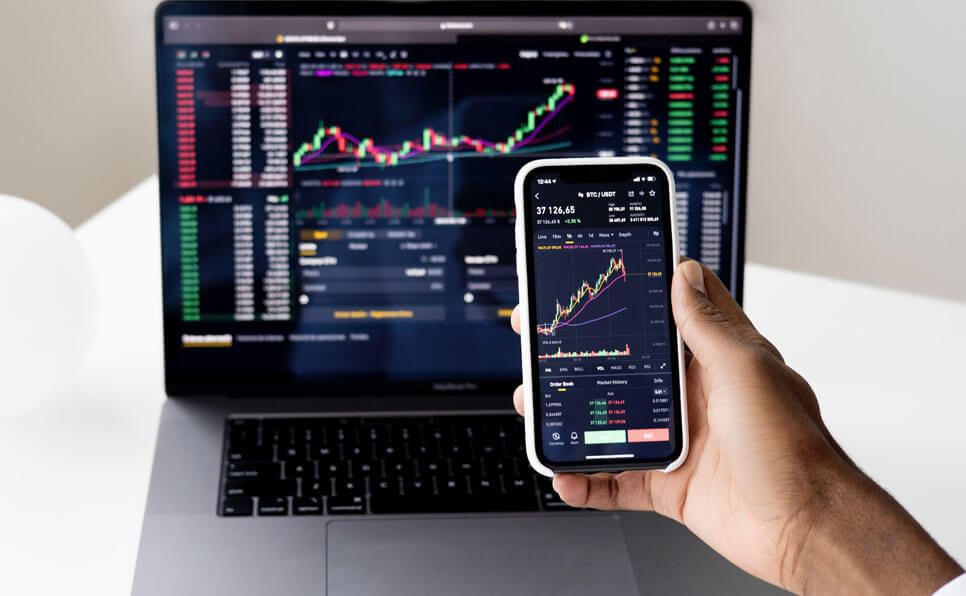The Middle East’s startup map is changing. While Saudi Arabia and the United Arab Emirates remain the largest magnets for venture capital in the region, 2024–2025 data show a broadening of investor attention: smaller or previously overlooked ecosystems such as Iraq and Morocco are now surfacing in funding rankings and deal tables. That shift is not a one-month fluke but the product of faster deal activity, new policy signals, sovereign and institutional capital deployment, and sector rotation toward fintech, AI, logistics and climate tech. The result is a more plural set of hubs across MENA a development that matters for founders, limited partners, and policy makers alike. Wamda+1
A regional snapshot: growth with nuance
Across the first half of 2025, trackers and industry analysts recorded a notable uptick in regional startup financing: one widely cited tally put MENA startup investment at roughly $2.1 billion across 334 deals in H1 2025, reflecting strong year-on-year growth that was partly fuelled by increases in debt-based financing alongside equity rounds. Different data providers use varying methodologies some count convertible notes or large strategic commitments differently so headline numbers vary, but the direction is consistent: more capital and more transactions than in the comparable period a year earlier.
Why Saudi and the UAE still top the table
Saudi Arabia and the UAE continue to attract outsized shares of that capital for a set of familiar reasons. Both countries have deep pockets (sovereign funds and state-backed vehicles), policy impetus behind entrepreneurship (accelerators, regulatory sandboxes, easier company registration), and concentrated home markets that make scale more viable. Saudi Arabia’s VC ecosystem in particular surged in early 2025, with reports indicating the kingdom led the region in funding and deal volume in Q1 2025 at times surpassing traditional benchmarks such as the UAE and even Singapore in regional comparisons. That leadership reflects heavy domestic capital deployment, growing mid-stage activity, and increasing interest in Saudi founders across fintech, AI, and enterprise software. The UAE’s strengths remain its international investor base, deep service ecosystem, and digital infrastructure, which make it a natural regional scaling platform for startups.
The rise of “surprise” entrants: Iraq and Morocco
Two of the more surprising stories in 2025 are Iraq and Morocco. Iraq’s ecosystem, long constrained by conflict legacies and limited digital infrastructure, is showing early signs of momentum: local accelerators, remittance-friendly fintech pilots, and consumer apps are finding product-market fit in cities such as Baghdad and Erbil. Analysts and ecosystem maps note steady year-on-year improvement in rankings and a handful of notable early deals and pre-seed rounds evidence that investor interest is beginning to seep into overlooked corridors of demand. Morocco, meanwhile, has benefited from steady public policy support, relatively low operational costs, stronger ties to European markets, and a maturing cluster of fintech, e-commerce and agri-tech startups. In mid-2025 Morocco saw an outsized month of deal activity that pushed it higher in regional funding tables, prompting some outlets to report it as climbing into the top four MENA markets for startup funding in certain monthly rankings. These developments signal that investors both regional and global are beginning to look past Gulf capitals for differentiated deal flow.
What sectors are driving the flows?
Two sectoral patterns stand out. First, fintech remains a dominant magnet for capital: digital payments, buy-now-pay-later, neobanking and B2B payments infrastructure continue to absorb significant rounds, encouraged by financial inclusion goals and regulatory sandboxes across the region. MAGNiTT’s sectoral deep dives flagged fintech as a leading category in H1 2025 VC activity across MENA. Second, AI and enterprise software have become hotter, especially in markets where incumbents (energy, logistics, oil & gas suppliers) are digitizing and 국내 demand for automation is rising. In parallel, e-commerce and logistics, healthtech, and climate/energy tech also account for an increasing share of tickets, reflecting both global investor preferences and local market needs.
What’s causing the geographic diversification?
Several forces are pushing investor attention beyond the Gulf megapoles. Sovereign and institutional capital from entities like sovereign wealth funds, development finance institutions, and family offices is being intentionally deployed to broaden national innovation footprints. Regulatory reforms, faster business registration, and incentives for local incorporation lower barriers in previously underfunded markets. Improved digital infrastructure and cheaper cloud services reduce the fixed costs of launching startups in secondary cities. Finally, a search for differentiated dealflow and lower entry valuations prompts some funds to look for early mover advantage in “second-tier” ecosystems. Together, these dynamics make an argument for a more distributed MENA startup geography. Multiple industry reports and local coverage corroborate each of these vectors of change.
Funding instruments and investor types shifting, too
The composition of capital also matters. H1 2025 saw not only equity rounds but a notable increase in structured financing: growth debt, revenue-based instruments, and corporate strategic investments (including partnerships and pilot agreements) played an important role in sustaining scaling companies. Institutional LPs from Europe and Asia are increasingly comfortable with MENA exposure through funds and direct co-investments, and Gulf LPs continue to back regional champions aggressively. Strategic commitments such as multi-hundred-million dollar technology partnerships and local expansion investments further blur the line between pure VC and corporate growth capital. These trends expand the palette of options available to founders and change expectations around dilution and exit timing.
Country snapshots: examples and notable deals
Saudi Arabia: The kingdom’s surge has been underpinned by public capital and growing private VC activity. Large strategic commitments from sovereign or quasi-sovereign players and headline-grabbing deals have underscored investor confidence in Saudi scale plays across AI, enterprise software, and logistics. Corporate tech commitments and multi-billion-dollar pledges in tech at major Saudi conferences have also reinforced momentum. As an example of high-value strategic interest, international tech partnerships and large capital commitments announced in the last 12 months highlight the scale of interest from global players.
UAE: Dubai and Abu Dhabi continue to function as regional hubs where founders incorporate, access international talent, and tap multinational clients. The UAE’s ecosystem benefits from a more mature professional services sector (legal, talent, fundraising) that helps startups scale regionally. Policy instruments like investor visas, accelerators and regulatory sandboxes have proven effective in channeling both capital and talent. Chambers Practice Guides
Iraq: The country’s startup ecosystem is nascent but notable for fast-growing consumer and B2B apps, logistics, and local fintech pilots that aim to simplify payments and remittances. A growing number of accelerators, micro-VCs and diaspora investors are beginning to commit pre-seed and seed tickets. While infrastructure and governance risks remain higher than in neighboring countries, early adopters see first-mover advantages in a large, under-digitized domestic market.
Morocco: Morocco’s rise is partly structural; proximity to Europe, stabilized policy frameworks, and a thriving pool of engineering talent have allowed a new wave of startups to secure cross-border investments. Some months in 2025 recorded spikes in activity and a handful of larger rounds that materially lifted the country’s rank in month-by-month funding tables. The ecosystem’s linkages to France and Spain also help founders access European pilot customers and investor networks.
Challenges that could slow diversification
This diversification is promising but fragile. Key constraints persist: limited late-stage funding in smaller markets means many founders must migrate to Gulf hubs to scale, talent pools remain shallow in some countries, and political or regulatory unpredictability can spook international LPs. Infrastructure gaps, foreign exchange controls, and a lack of exit routes (public markets or active M&A corridors) are also real inhibitors. Investors learn to price country risk into their rounds, which can depress valuations and limit follow-on financing in the most nascent ecosystems.
What this means for founders and investors
For founders, the moment creates both choice and complexity. Founders in Iraq, Morocco or other emerging MENA markets can raise earlier by leaning on local accelerators, diaspora networks, and regional angel syndicates but scaling often still requires ties to Saudi or UAE hubs, or constructive partnerships with regional corporates. For investors, diversification implies more scouting, localized due diligence, and a willingness to conduct operational support (talent, go-to-market help) rather than just providing capital. Funds that can pair capital with market access and strategic partnerships will likely capture the best returns as new ecosystems mature. Wamda+1
Outlook: consolidation and maturation ahead
Looking ahead, expect a two-speed but converging regional market. Gulf hubs (especially Saudi and UAE) will continue to dominate late-stage deals and large cross-border rounds because of capital depth. At the same time, increased seed and pre-seed activity in markets such as Morocco, Iraq, Egypt and others will broaden the pipeline of investable startups. Over the next 24–36 months, the region may also see more fund formations focused on secondary cities and local LPs building track records that enable follow-on financing. If policy and infrastructure improvements continue, the MENA VC story will be one of maturation: from concentrated mega-hubs to a polycentric geography where multiple countries feed the regional growth engine
The Middle East’s startup map is changing. While Saudi Arabia and the United Arab Emirates remain the largest magnets for venture capital in the region, 2024–2025 data show a broadening of investor attention: smaller or previously overlooked ecosystems such as Iraq and Morocco are now surfacing in funding rankings and deal tables. That shift is not a one-month fluke but the product of faster deal activity, new policy signals, sovereign and institutional capital deployment, and sector rotation toward fintech, AI, logistics and climate tech. The result is a more plural set of hubs across MENA a development that matters for founders, limited partners, and policy makers alike.
A regional snapshot: growth with nuance
Across the first half of 2025, trackers and industry analysts recorded a notable uptick in regional startup financing: one widely cited tally put MENA startup investment at roughly $2.1 billion across 334 deals in H1 2025, reflecting strong year-on-year growth that was partly fuelled by increases in debt-based financing alongside equity rounds. Different data providers use varying methodologies some count convertible notes or large strategic commitments differently so headline numbers vary, but the direction is consistent: more capital and more transactions than in the comparable period a year earlier.
Why Saudi and the UAE still top the table
Saudi Arabia and the UAE continue to attract outsized shares of that capital for a set of familiar reasons. Both countries have deep pockets (sovereign funds and state-backed vehicles), policy impetus behind entrepreneurship (accelerators, regulatory sandboxes, easier company registration), and concentrated home markets that make scale more viable. Saudi Arabia’s VC ecosystem in particular surged in early 2025, with reports indicating the kingdom led the region in funding and deal volume in Q1 2025 at times surpassing traditional benchmarks such as the UAE and even Singapore in regional comparisons. That leadership reflects heavy domestic capital deployment, growing mid-stage activity, and increasing interest in Saudi founders across fintech, AI, and enterprise software. The UAE’s strengths remain its international investor base, deep service ecosystem, and digital infrastructure, which make it a natural regional scaling platform for startups.
The rise of “surprise” entrants: Iraq and Morocco
Two of the more surprising stories in 2025 are Iraq and Morocco. Iraq’s ecosystem, long constrained by conflict legacies and limited digital infrastructure, is showing early signs of momentum: local accelerators, remittance-friendly fintech pilots, and consumer apps are finding product-market fit in cities such as Baghdad and Erbil. Analysts and ecosystem maps note steady year-on-year improvement in rankings and a handful of notable early deals and pre-seed rounds evidence that investor interest is beginning to seep into overlooked corridors of demand. Morocco, meanwhile, has benefited from steady public policy support, relatively low operational costs, stronger ties to European markets, and a maturing cluster of fintech, e-commerce and agri-tech startups. In mid-2025 Morocco saw an outsized month of deal activity that pushed it higher in regional funding tables, prompting some outlets to report it as climbing into the top four MENA markets for startup funding in certain monthly rankings. These developments signal that investors both regional and global are beginning to look past Gulf capitals for differentiated deal flow.
What sectors are driving the flows?
Two sectoral patterns stand out. First, fintech remains a dominant magnet for capital: digital payments, buy-now-pay-later, neobanking and B2B payments infrastructure continue to absorb significant rounds, encouraged by financial inclusion goals and regulatory sandboxes across the region. MAGNiTT’s sectoral deep dives flagged fintech as a leading category in H1 2025 VC activity across MENA. Second, AI and enterprise software have become hotter, especially in markets where incumbents (energy, logistics, oil & gas suppliers) are digitizing and 국내 demand for automation is rising. In parallel, e-commerce and logistics, healthtech, and climate/energy tech also account for an increasing share of tickets, reflecting both global investor preferences and local market needs.
What’s causing the geographic diversification?
Several forces are pushing investor attention beyond the Gulf megapoles. Sovereign and institutional capital from entities like sovereign wealth funds, development finance institutions, and family offices is being intentionally deployed to broaden national innovation footprints. Regulatory reforms, faster business registration, and incentives for local incorporation lower barriers in previously underfunded markets. Improved digital infrastructure and cheaper cloud services reduce the fixed costs of launching startups in secondary cities. Finally, a search for differentiated dealflow and lower entry valuations prompts some funds to look for early mover advantage in “second-tier” ecosystems. Together, these dynamics make an argument for a more distributed MENA startup geography. Multiple industry reports and local coverage corroborate each of these vectors of change.
Funding instruments and investor types shifting, too
The composition of capital also matters. H1 2025 saw not only equity rounds but a notable increase in structured financing: growth debt, revenue-based instruments, and corporate strategic investments (including partnerships and pilot agreements) played an important role in sustaining scaling companies. Institutional LPs from Europe and Asia are increasingly comfortable with MENA exposure through funds and direct co-investments, and Gulf LPs continue to back regional champions aggressively. Strategic commitments such as multi-hundred-million dollar technology partnerships and local expansion investments further blur the line between pure VC and corporate growth capital. These trends expand the palette of options available to founders and change expectations around dilution and exit timing.
Country snapshots: examples and notable deals
Saudi Arabia: The kingdom’s surge has been underpinned by public capital and growing private VC activity. Large strategic commitments from sovereign or quasi-sovereign players and headline-grabbing deals have underscored investor confidence in Saudi scale plays across AI, enterprise software, and logistics. Corporate tech commitments and multi-billion-dollar pledges in tech at major Saudi conferences have also reinforced momentum. As an example of high-value strategic interest, international tech partnerships and large capital commitments announced in the last 12 months highlight the scale of interest from global players.
UAE: Dubai and Abu Dhabi continue to function as regional hubs where founders incorporate, access international talent, and tap multinational clients. The UAE’s ecosystem benefits from a more mature professional services sector (legal, talent, fundraising) that helps startups scale regionally. Policy instruments like investor visas, accelerators and regulatory sandboxes have proven effective in channeling both capital and talent. Chambers Practice Guides
Iraq: The country’s startup ecosystem is nascent but notable for fast-growing consumer and B2B apps, logistics, and local fintech pilots that aim to simplify payments and remittances. A growing number of accelerators, micro-VCs and diaspora investors are beginning to commit pre-seed and seed tickets. While infrastructure and governance risks remain higher than in neighboring countries, early adopters see first-mover advantages in a large, under-digitized domestic market.
Morocco: Morocco’s rise is partly structural; proximity to Europe, stabilized policy frameworks, and a thriving pool of engineering talent have allowed a new wave of startups to secure cross-border investments. Some months in 2025 recorded spikes in activity and a handful of larger rounds that materially lifted the country’s rank in month-by-month funding tables. The ecosystem’s linkages to France and Spain also help founders access European pilot customers and investor networks.
Challenges that could slow diversification
This diversification is promising but fragile. Key constraints persist: limited late-stage funding in smaller markets means many founders must migrate to Gulf hubs to scale, talent pools remain shallow in some countries, and political or regulatory unpredictability can spook international LPs. Infrastructure gaps, foreign exchange controls, and a lack of exit routes (public markets or active M&A corridors) are also real inhibitors. Investors learn to price country risk into their rounds, which can depress valuations and limit follow-on financing in the most nascent ecosystems.
What this means for founders and investors
For founders, the moment creates both choice and complexity. Founders in Iraq, Morocco or other emerging MENA markets can raise earlier by leaning on local accelerators, diaspora networks, and regional angel syndicates but scaling often still requires ties to Saudi or UAE hubs, or constructive partnerships with regional corporates. For investors, diversification implies more scouting, localized due diligence, and a willingness to conduct operational support (talent, go-to-market help) rather than just providing capital. Funds that can pair capital with market access and strategic partnerships will likely capture the best returns as new ecosystems mature.
Outlook: consolidation and maturation ahead
Looking ahead, expect a two-speed but converging regional market. Gulf hubs (especially Saudi and UAE) will continue to dominate late-stage deals and large cross-border rounds because of capital depth. At the same time, increased seed and pre-seed activity in markets such as Morocco, Iraq, Egypt and others will broaden the pipeline of investable startups. Over the next 24–36 months, the region may also see more fund formations focused on secondary cities and local LPs building track records that enable follow-on financing. If policy and infrastructure improvements continue, the MENA VC story will be one of maturation: from concentrated mega-hubs to a polycentric geography where multiple countries feed the regional growth engine



